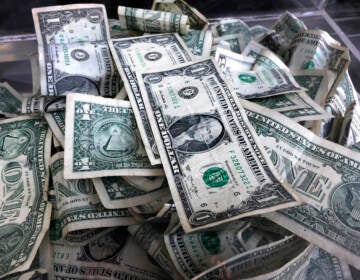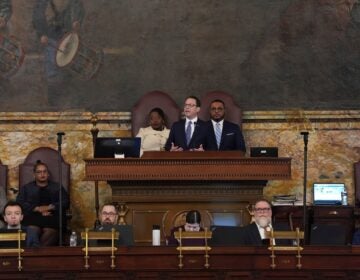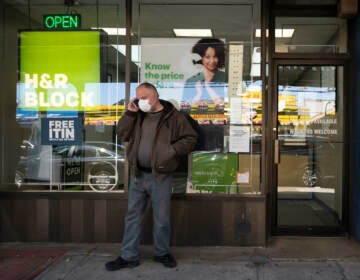Pew researchers measured Philly’s business tax burden. Here’s what they found
The organization analyzed more than 920,000 tax returns filed by businesses in Philadelphia to better understand the business tax landscape.

The heart of Philadelphia commerce in Center City. (Kimberly Paynter/WHYY)
From Philly and the Pa. suburbs to South Jersey and Delaware, what would you like WHYY News to cover? Let us know!
Philadelphia businesses are subjected to the same tax rate, but based on their industry sector, net income and gross revenue, the tax burden for companies in the city vary, according to a new Pew Charitable Trusts report. The largest companies pay the lion’s share of taxes, researchers said.
Pew researchers analyzed the Business Income and Receipts Tax, known as BIRT, and the Net Profits Tax from 2017 through 2021 to cull their data. Some exceptions were 2020 because of the COVID-19 pandemic disruptions, and tax returns for 2022 and 2023 were incomplete when research was conducted.
In 2021, 34,800 of city businesses filed BIRT returns, but about two-thirds of businesses received exemption because they earned less than $100,000 in gross revenue.
The research did not include any other city, state or federal taxes owed by businesses.
“We see some really interesting nuance here in the business tax structure in Philadelphia that we think is really important to understand,” said Thomas Ginsberg, senior editor and research manager with The Pew Charitable Trusts’ Philadelphia research and policy initiative.
According to the Pew report, the very large businesses are levied a 7.1% effective tax rate on their gross revenue compared to 3.2 % for small businesses. The very small businesses pay less than 1%.
“The effective tax rate, or the tax burden, is really a reflection of what businesses experience from taxes, what they feel,” Ginsberg said. “It’s the hit on their profits.”
The median effective tax rate for BIRT is 3.5% on businesses, data shows.
Wholesale trade businesses pay the highest effective tax rate of 6% while real estate companies pay 2.1%. The reason for the difference is how different industries operate, especially with such a unique tax structure that doesn’t exist in most cities.
“It’s a tax on both net income and gross receipts. Other cities, if they have a business tax at all, are on one of those, not both,” he said. “It’s one of the reasons that the tax burden varies across industry sectors because sectors have different relationships to net [income] and gross [revenue]. A real estate company may have a lot of net income but a wholesale company doesn’t.”
When the BIRT and Net Profits Tax are combined, it accounts for roughly 16% of city revenues.
But not all industries pay the same in relation to their size. Nonprofit entities such as universities come under a different bracket. The health care and social assistance industry represents 24% of all jobs in the city, but it accounts for just 5% of BIRT revenue.
The largest industry sector that contributes to the city’s BIRT revenue are the professional, scientific and technical businesses, with 25%.
Last year, Philadelphia City Council and former Mayor Jim Kenney’s administration lowered the BIRT tax rate slightly. But businesses will not receive that kind of relief under the new City Council and Mayor Cherelle Parker’s administration.
A Philadelphia tax reform commission is exploring what’s possible in the city and will make recommendations to city officials for consideration. Similar commissions similarly reviewed the city’s tax structure in both 2003 and 2009.
The first public meeting of the newest tax reform commission is June 17 at 10 a.m. inside City Hall.

Show your support for local public media
WHYY is your source for fact-based, in-depth journalism and information. As a nonprofit organization, we rely on financial support from readers like you. Please give today.







